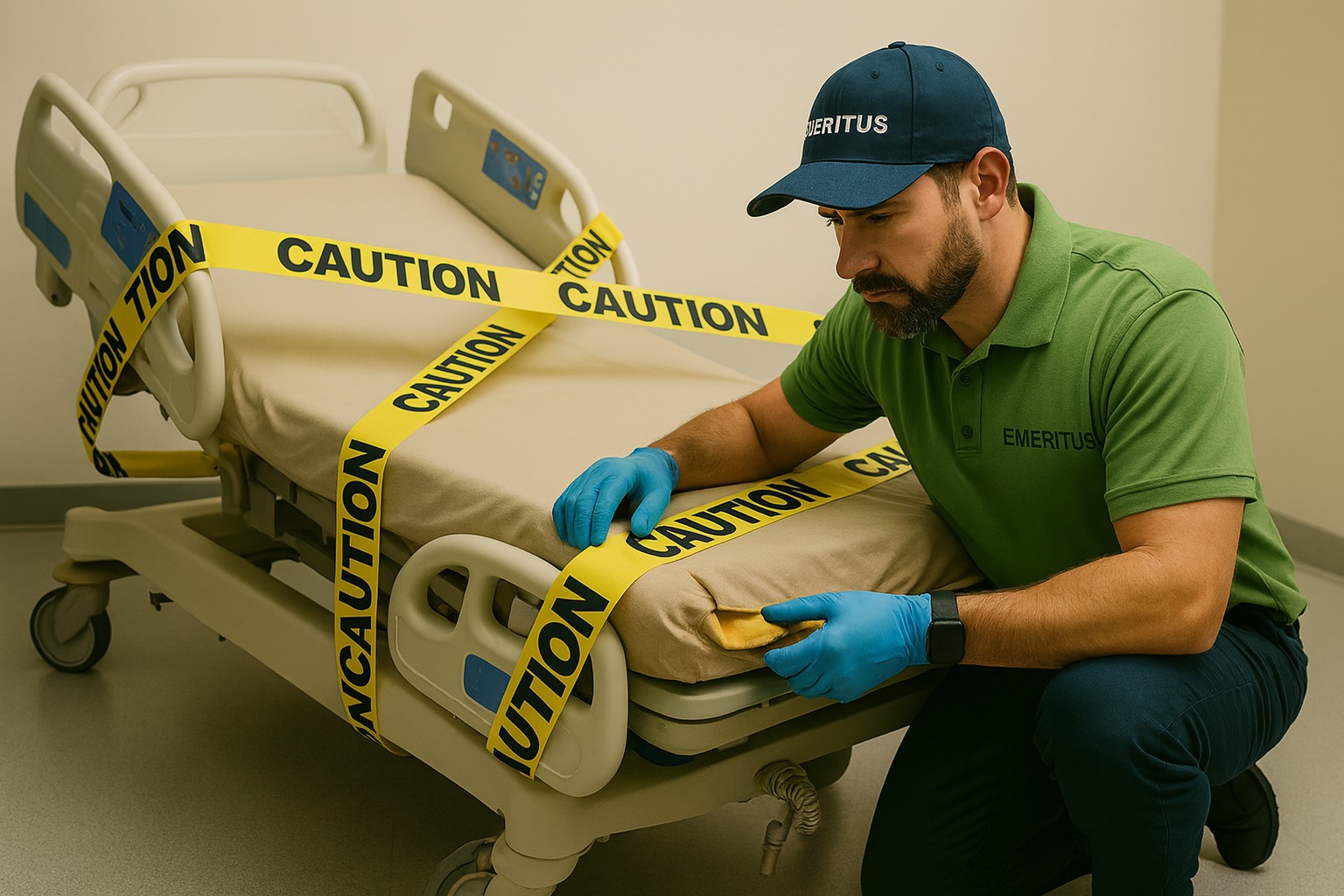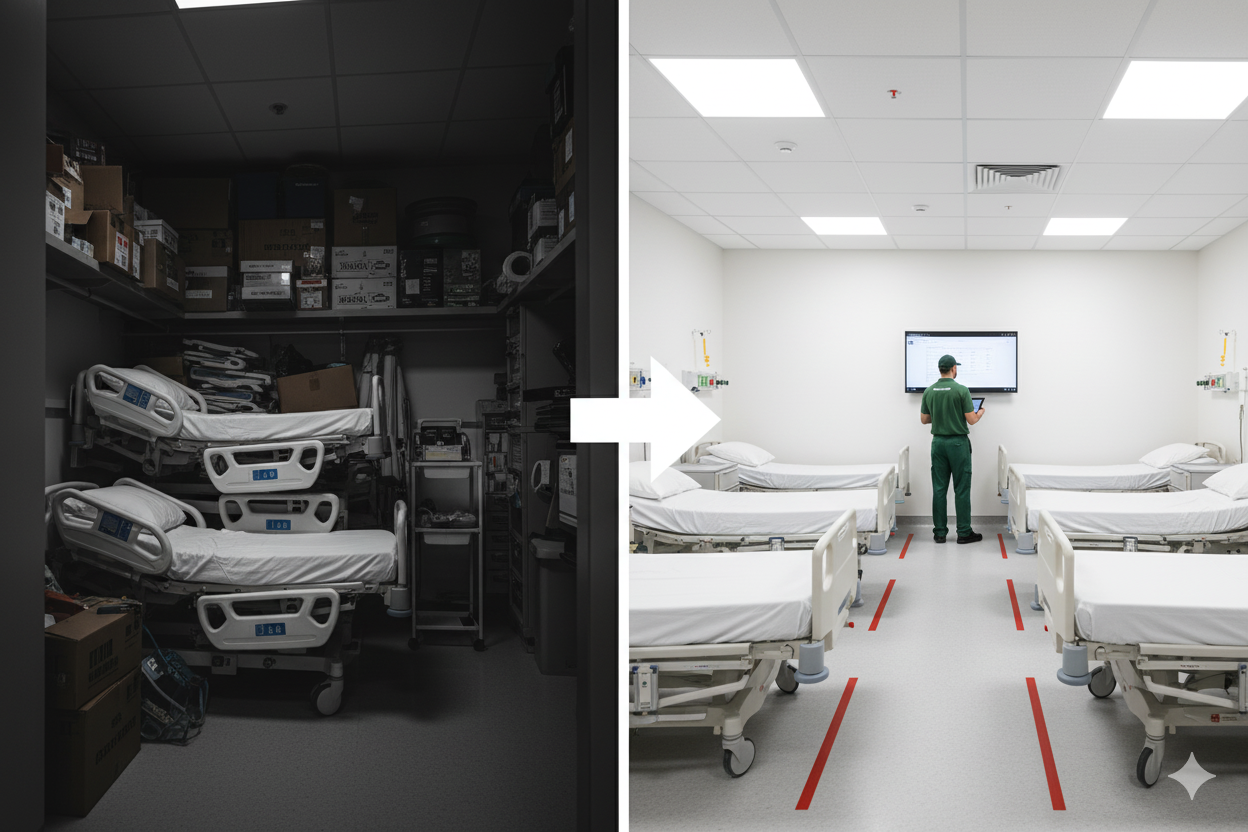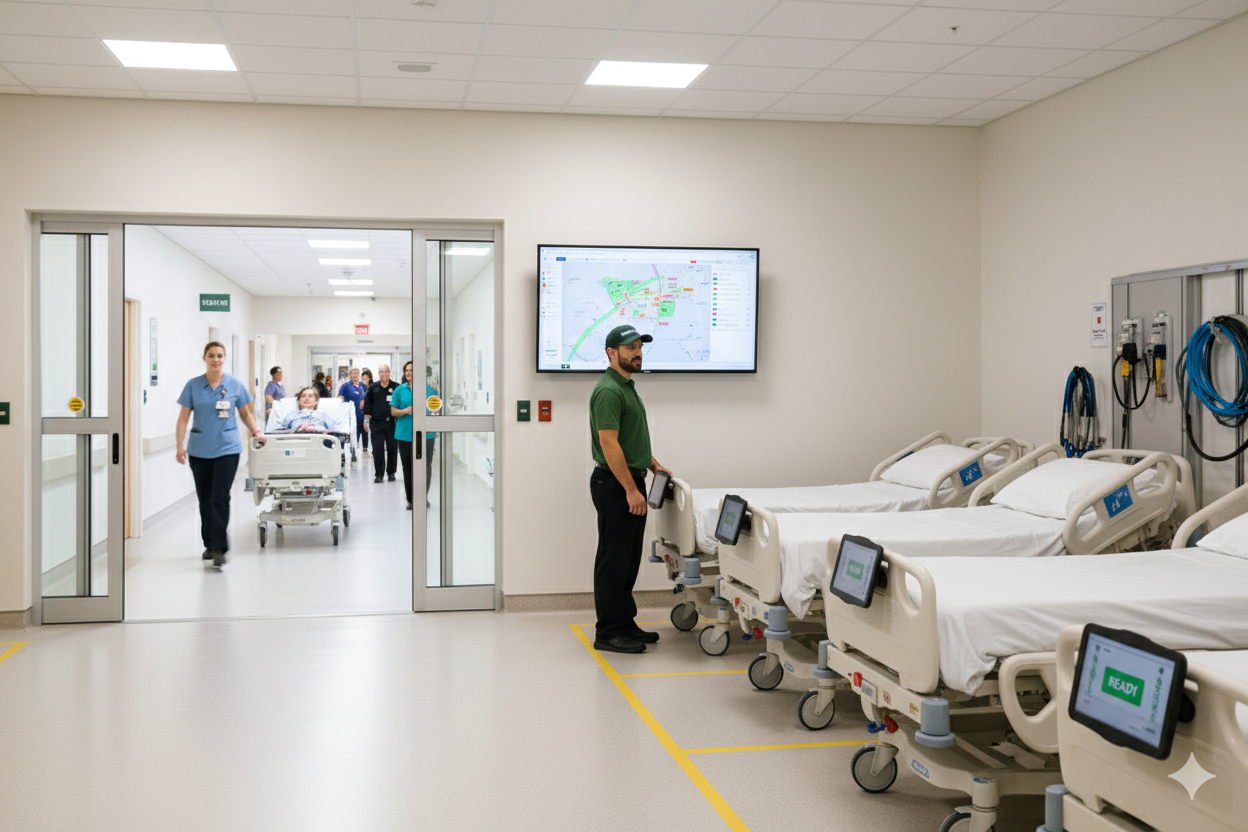
In a hospital setting, every second counts. And so does every bed.
It may sound simple, but a single inoperable hospital bed can bring major operations to a grinding halt. From delayed ER admissions to postponed surgeries and extended patient transfers, one broken bed can become a silent bottleneck in patient throughput-and a significant revenue blocker.
Let’s say a 30-bed unit has one bed out of service for 24 hours. If the average cost per inpatient day is $2,500, that’s $2,500 in revenue lost, not to mention the ripple effect on staffing, scheduling, and space management. Multiply that across departments and days, and the financial and operational impact adds up fast.
More critically, patient care can suffer. Emergency Room backups, postponed surgeries, and slowed discharge processes are all consequences of equipment downtime. And while frontline staff and administrators hustle to adapt, the root cause often goes unresolved.
Emeritus recognizes that hospital beds aren’t just furniture-they’re frontline assets. Our preventative maintenance programs are designed to keep beds in service, reduce avoidable downtime, and support the continuous flow of patient care.
With real-time tracking, quick-response servicing, and routine checkups, we help hospitals stay ahead of potential bottlenecks. And by doing so, we turn beds from liabilities back into the vital resources they were meant to be.
When equipment uptime becomes part of your operational strategy, patient flow improves, costs decrease, and care delivery becomes more efficient. That’s the Emeritus advantage.











